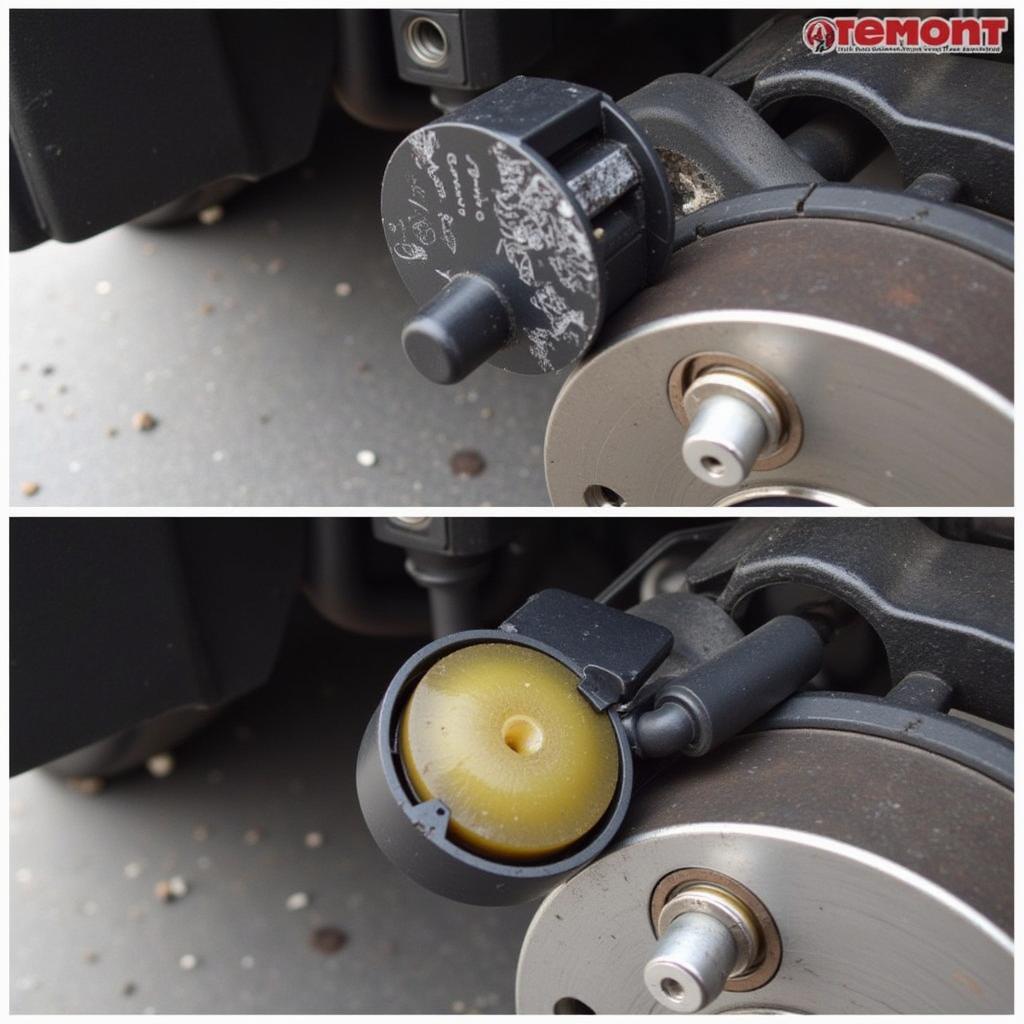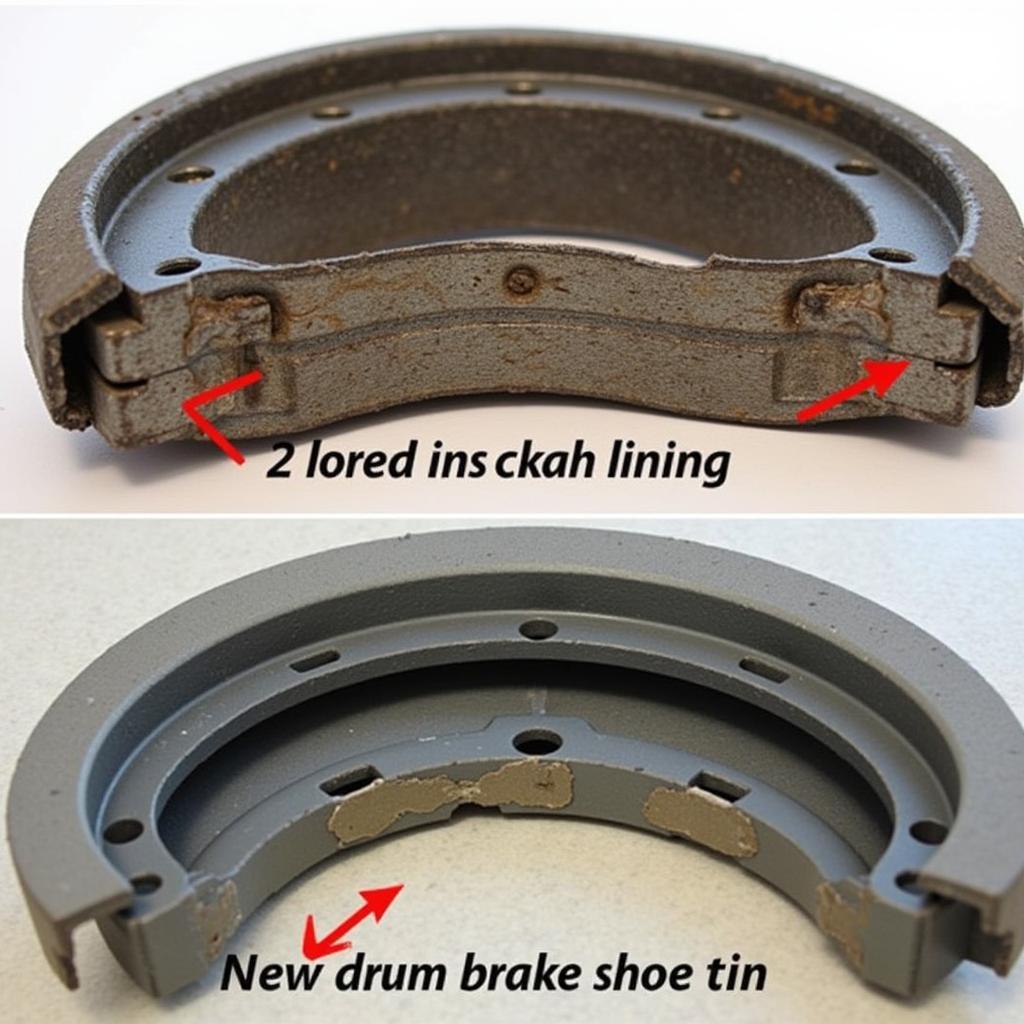The dreaded brake pad warning light on your VW Golf Mk5 can be a source of anxiety. Understanding what triggers this light, how to diagnose the issue, and the potential solutions will empower you to address the problem effectively and safely. This guide provides a comprehensive overview of everything you need to know about the vw golf mk5 brake pad warning light.
Understanding the VW Golf Mk5 Brake Pad Warning Light
The brake pad warning light is part of your car’s essential safety system. Its primary function is to alert you when your brake pads are worn down and need replacing. Ignoring this warning can lead to compromised braking performance and potentially dangerous driving conditions. The warning light is triggered by a sensor embedded within the brake pad assembly.
What does the mk5 golf brake warning light mean? Typically, the light is amber or yellow and illuminates on the dashboard. In some cases, it might be accompanied by an audible chime. Don’t panic if you see the warning light. While it signifies an issue that needs attention, it doesn’t necessarily mean immediate danger. However, prompt action is crucial.
Diagnosing the Problem
While the brake pad warning light usually indicates worn brake pads, there are other potential causes. A faulty sensor, damaged wiring, or even low brake fluid can trigger the warning light. Before rushing to replace your brake pads, it’s essential to diagnose the problem accurately.
Checking the Brake Pads
The first step is to visually inspect your brake pads. You can usually do this by looking through the spaces between the wheel spokes. Look for a significant reduction in brake pad thickness. If the friction material is worn down close to the metal backing plate, it’s time for new brake pads.
Checking the Brake Pad Sensor
The brake pad sensor is a small wire embedded in the brake pad material. When the pad wears down, the sensor makes contact with the rotor, completing a circuit and triggering the warning light. Check the sensor for damage or disconnection. Sometimes, a faulty sensor can trigger the light even with sufficient pad material.
 VW Golf Mk5 Brake Pad Sensor Location and Condition
VW Golf Mk5 Brake Pad Sensor Location and Condition
Checking the Brake Fluid Level
Low brake fluid can also trigger the brake pad warning light. Check the brake fluid reservoir under the hood. If the fluid level is below the minimum mark, top it off with the correct DOT specification fluid recommended for your VW Golf Mk5. However, consistently low brake fluid could indicate a leak, requiring immediate professional attention. Remember, never drive with low brake fluid, as it can severely compromise your braking system.
Solutions and Next Steps
Once you’ve identified the cause of the brake pad warning light, you can take appropriate action.
-
Worn Brake Pads: If your brake pads are worn, it’s essential to replace them as soon as possible. You can do this yourself if you have the necessary tools and experience, or you can take your car to a qualified mechanic. Consider replacing the brake pad wear sensor. You may also find resources related to the brake pad warning light vw golf mk5 or even a more specific search like mk5 golf brake warning light.
-
Faulty Sensor: If the sensor is faulty, replace it. This is a relatively simple and inexpensive fix.
-
Low Brake Fluid: Top off the brake fluid to the correct level. If the fluid level continues to drop, have your car inspected for leaks by a qualified mechanic. You might want to check out other warning light related articles like vw golf brake fluid warning light or check engine light oil light and battery light on. It’s important to be aware of all the warning signs your car gives you. Some issues, like a ford focus seat belt warning light stays on, might seem minor but could indicate a larger problem.
Conclusion
The vw golf mk5 brake pad warning light is a crucial safety feature. Understanding its function and taking prompt action when it illuminates is vital for safe driving. Regularly inspecting your brake pads and addressing any underlying issues will keep your VW Golf Mk5 stopping reliably and safely. Don’t delay addressing this important warning.
FAQ
-
How often should I check my brake pads? It’s good practice to visually inspect your brake pads every few months, or more frequently if you drive in demanding conditions.
-
Can I drive with the brake pad warning light on? While you can technically drive a short distance, it’s strongly recommended to address the issue as soon as possible. Continued driving with worn brake pads can damage the rotors and compromise braking performance.
-
How much does it cost to replace brake pads? The cost varies depending on the type of brake pads and labor rates in your area.
-
Can I replace brake pads myself? Yes, if you have the necessary tools and mechanical experience. However, if you are unsure, it’s always best to consult a qualified mechanic.
-
What happens if I ignore the brake pad warning light? Ignoring the warning light can lead to severely worn brake pads, damaged rotors, and significantly reduced braking performance, creating a potentially dangerous driving situation.
-
Can other issues trigger the brake pad warning light? Yes, a faulty sensor, damaged wiring, or low brake fluid can also trigger the warning light.
-
What should I do if I top off my brake fluid and the level continues to drop? This indicates a potential leak in the braking system, which requires immediate professional attention.


